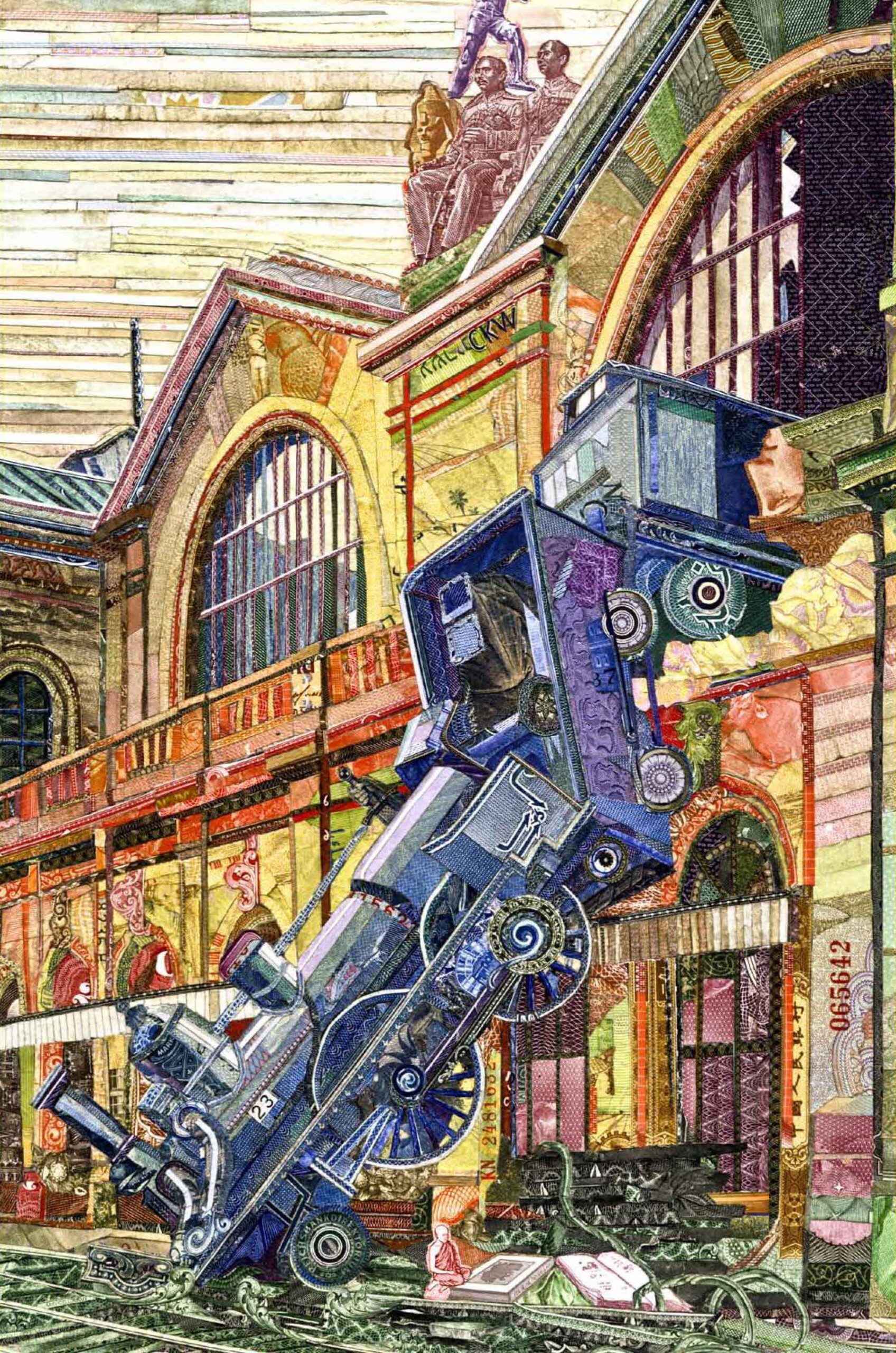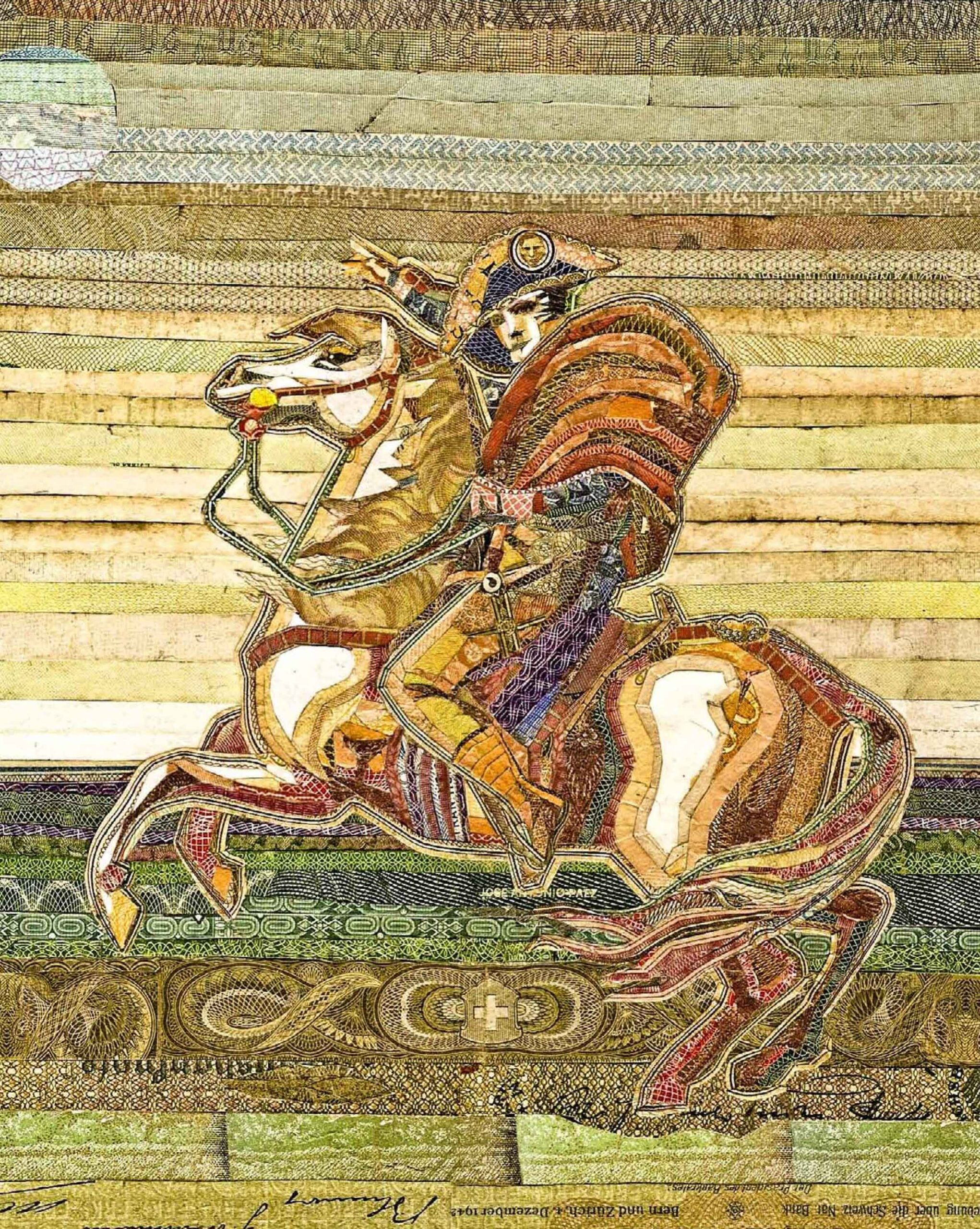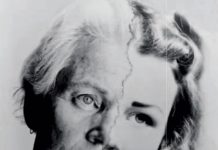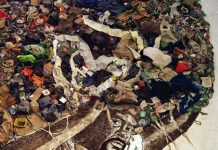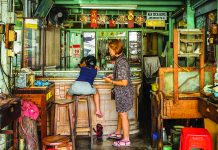(text & photos C. K. Wilde)
WHY cut up money? The original idea of currency collage came from Marshall Weber’s seminal show The United States of Americana in San Francisco in 1990. In 1995, money collage was introduced to me in college in a class on non-static forms. Marshall Weber’s collages used real dollar bills as manifest socio-economic semiotic critique.
The elegant collages of Walter Hamady inspired me to engage in collage as a serious artistic practice. The Progressive magazine commissioned me to illustrate a story on political action committees in 1997; I made a collage of a pachyderm made from dollars bills in response. I made certain that the art director of the Progressive knew about Marshall Weber’s dollar collages; Weber’s Buckskin (a jacket made of dollar bills) was reproduced in the magazine as well. I was commissioned to make several more money collages for the magazine, including the collage “Alternating Currency”.
“Alternating Currency” was the first currency collage I made with currency from all over the world. The piece was a critical reconfiguration of the system of capitalism, and the cult of personality propaganda that banknotes represent. The material used and its handling necessitated deep reflection on the use of symbolic capital as a system of inter-human relations.
More than a superficial use of money as the material for just any image, the money collages coerced a problematisation of banknotes as a semiotic détournement. Banknotes are encoded into self-reflexive, critical, multivalent images. The détournement of these symbols allows for the revelations of a hidden narrative through the reconfiguration of the symbolic tool of oppression. Revealed is the transcript of the powerless, the poor, the victims of the system of global capitalism.
Thus cutting up money is a disruption of the narrative of power. Collage as a way to take an iconic critical stance through the reconfiguration of currency and its adjutant symbols of power. Collage as a medium has a holographic transparency unlike any other medium: The process of the making of the image is present in the material handling dialects of the object. The viewer “sees” how the collage was made in the very materials used.
My collages have referenced subjects ranging from space exploration, mythology, religion, slavery and ecology to the history of warfare, the history of money and art history. For instance, the collage “Quixotic Ambition” referenced Picasso’s Don Quixote and Sancho Panza, petroleum production and warfare. The windmills were replaced with oil derricks, and the figure of Don Quixote replaced with a mounted German soldier from WWI occupying holland. A visual rebus of meanings, redolent with symbolic readings, this piece is about art history, nationalism and the untenable nature of our human desire for control. A compression of historical references into the flat plane of collaged banknote images telescopes the viewers associations with the artist’s work.
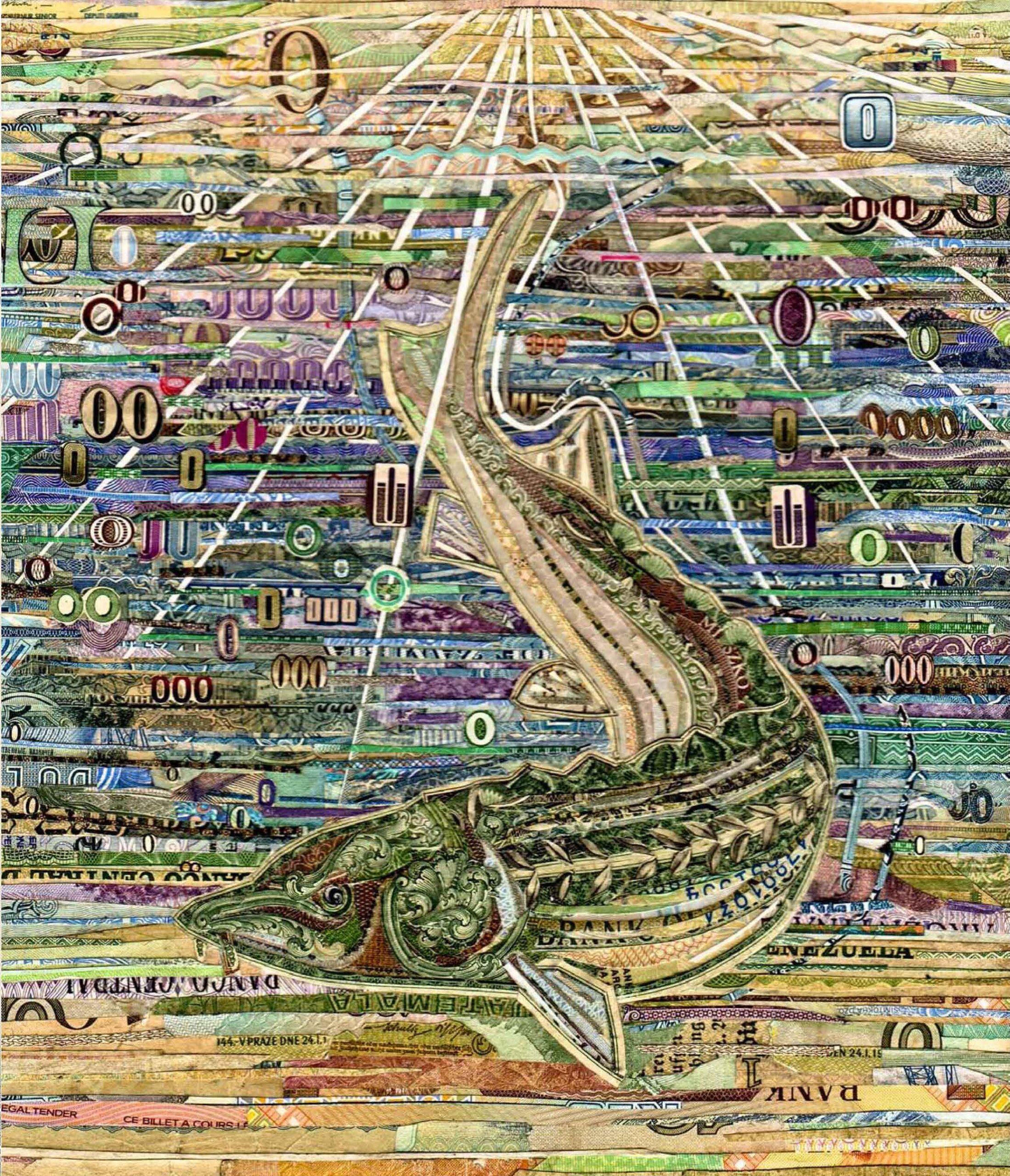
My fetishisation of paper money comes from my childhood. I travelled to Europe often to visit my relatives. When I returned, I often still had money from the places I travelled. An attempt to buy candy with Deutsche marks in the US brought into sharp relief the inherent contradictions of nationalism and international travel. Are we not one people on our one planet? I thought. Why is this money powerful only in one context, useless in another?
This problematisation of value has had profound effects on me. Seeing my mother work three jobs to pay the bills made me realise that hard work does not always find reward in Power. Always of an entrepreneurial bent as a child, I began dog walking services, erected lemonade stands and even harvested wild onions to sell to my neighbours – all invented values for services rendered, all an attempt to find parity with the complex world of the marketplace.
The ironies of co-modifying my dissent through collaged currency are legion. In order to live to make more of these collages, I need money, so I sell the collages. The fact that the very symbolic manifestation of power has been rendered “useless” as currency to create another form of currency is an alchemy of sorts. That the wealthy use my visual critiques of the very system of power that supports our lives as decoration for their homes; the art as a political icon or talisman of their political awareness is a wild thicket of ironies.
To try to articulate all this is very painful; I must confront my own willingness to forget my complicity to suffering in the world in order to maintain this esoteric practice of making art. Is it ultimately philosophically untenable to justify the production of art objects in a world so troubled?
I convince myself that the world needs my work as much as I need it, that by making this work I am participating in the global dialectic of humanity. Art in the marketplace context becomes another symbol of disconnection, of an all but hermetic world with its own rules and associations. I am a maker of luxury goods that critique the system, which allows for those goods to be consumed. The painstaking collage work that I do is my life’s blood manifest, and yet for some it is just like a car, or watch, or vacation home in that it is just another symbol of accrued wealth and power. Can Art be a tool for social change? Wither beauty and truth?
Ask a poor man what truth is and he will say hunger; ask a rich man and he will say power. I say Art: older than money or war. In an alternating current of energy, we make our life manifest in our works. humans are Art, not Money or War. AG
Read the rest of this article in No.88 Issue 3/2012 of Asian Geographic magazine by subscribing here or check out all of our publications here.





